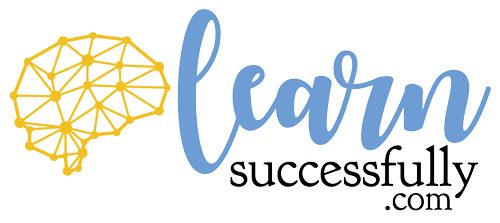
Students and adults don’t have to settle for a life of confusion when it comes to reading and comprehension. Dyslexia can be treated and overcome with NILD Educational Therapy®, a direct, language-based intervention with over 40 years of success for students with dyslexia. PHOTO: Dmitry Ratushny on Unsplash
Are you the parent of a student who seems to constantly complain, “I hate reading,” or “I’m just a lousy reader,” or “I hate math — it’s too hard!” Sometimes our kids complain out of boredom or a desire to avoid having to work. When you start to see grades suffer, however, or you know that your child is genuinely struggling with a subject — and putting in the study time without making much progress, then it’s time to ask some important questions.
What behaviors have I observed that I have questions or concerns about? What are are my child’s strengths and weaknesses? What are the specific academic skill areas in which his school performance is low? Is it possible that he may have some kind of learning impairment?
A learning impairment, or disability, is an area of weakness or inefficiency in brain function that significantly hinders the ability to learn. It is a pattern of neurological dysfunction in the brain that causes a student to have difficulty correctly receiving information (perception), correctly processing information (cognition/thinking), or satisfactorily responding to information (written and verbal expression, visual-motor coordination, memory, etc.).
Students with learning disabilities experience an imbalance in their own ability levels. They are very good at some things, very poor at others, and feel the tension between what they can and cannot do. Frustration is a hallmark of a student with learning disabilities. Typically such students will either be failing in one or more academic areas or be expending excessive amounts of energy to succeed. They are also highly inconsistent, able to do a task one day and unable the next.
Learning deficits generally fall into three basic categories: Dyslexia, dysgraphia, and dyscalculia. Understanding these is critical to successful educational therapy. This post is part one of a three-part series that explores this trio of disabilities. Left unaddressed, any one, or combination of the three, creates challenges to learning that can persist throughout the school years into adulthood. The good news is that there is effective therapy for overcoming the limitations imposed by any of these deficits. Understanding them is the first step.
The names of all three learning impairments start with “dys,” meaning “difficulty with.” Of the three, dyslexia is the most familiar to many people. The second part of the word, “lexia,” means “words.” First used in the late 1800s, “dyslexia” originally referred to a specific learning deficit that hindered a person’s ability to read. The term “word blindness” was used in more common language to refer to the same impairment.
Today it refers to a broad category of language deficits. Students with dyslexia may struggle to hear and manipulate sounds in words. They may have difficulty reading and spelling words accurately and fluently. Have you ever heard your child say something like, “I read the assignment, but I just didn’t get it,” or “I read the chapter three times, but I just can’t figure out what it’s about?” Dyslexia can hinder reading comprehension to the point that learners struggle to understand what they have read. It can also stifle the development of a student’s vocabulary. Children with reading impairments must rely extensively on words they hear to broaden their word base. Some children with dyslexia also struggle with auditory processing issues, making even adding vocabulary through spoken words a challenge.
Do you know the signs associated with dyslexia?
• Difficulty learning to speak
• Trouble learning letters and their sounds
• Difficulty organizing written and spoken language
• Trouble memorizing number facts
• Difficulty reading quickly enough to comprehend
• Trouble persisting with and comprehending longer reading assignments
• Difficulty spelling
• Trouble learning a foreign language
• Difficulty correctly doing math operations– International Dyslexia Association
Can those with dyslexia be helped? The answer is a resounding yes!
Every human brain is created with a unique pattern of strengths and weaknesses. We each have certain areas that make sense to us easily as well as areas of difficulty that require outside explanation and extra effort to understand. NILD Educational Therapy® is a direct, language-based intervention with over 40 years of success for students with dyslexia.
As a licensed NILD educational therapist, my focus is to strengthen the underlying causes of learning difficulties rather than simply treating the symptoms. Our therapy is individualized and aims the intervention just above the student’s level of functioning and raises expectations for performance. Our therapeutic, cognitive-based intervention unlocks learning potential and transforms defeated learners into competent, confident individuals.
The International Dyslexia Association has accredited NILD’s therapeutic, research-based, individualized approach, grounded in test and observational data, addressing all components of reading within a cognitive development framework.
You don’t have to settle!
Dyslexia doesn’t have to limit or define a child’s academic career or life. It can be overcome. People with dyslexia often have average to superior intelligence. Many are gifted in math, science, fine arts, journalism, and other creative fields. You may be surprised to learn that those who struggled with learning disabilities include Thomas Edison, Albert Einstein, Leonardo da Vinci, Winston Churchill and many others who have changed the course of our world.
Students and families who have struggled with dyslexia and overcome offer the light of hope to those still in the battle. Be encouraged by the words of this parent of a dyslexic child:
My son has been diagnosed with dyslexia and auditory processing issues. For many years we struggled to get the help we needed for him to become successful in his learning.
On our journey with our son we met many well meaning people who wanted to help with different reading strategies and phonics programs, but none seemed to work for him. Because you never outgrow dyslexia, we felt stuck.
Then we learned about the NILD program. Our son began NILD therapies his sixth grade year of school. At the time he was reading on a second to third grade reading level. NILD has changed his life.
Through his therapies, he has continued to make progress every year. I recently had the privilege to watch an NILD session of my sons. I was amazed and it brought to tears as I watched my son, who at one time could barely read, read words he had never read before! I watched as he did a practice called “Rhythmic Writing.” Here was a child with dyslexia and auditory processing issues who struggles with working memory. During this process he was able to answer math problems quickly and correctly. Through “Rhythmic Writing” I was amazed how the brain was able to process multiple things quickly and retrieve the information quickly!
My son is now in the ninth grade and has made amazing progress academically and socially. He reads better than I ever dreamed he would and he has the necessary strategies to sound out college level vocabulary.
My son is dyslexic, he always will be, but with NILD he has been given the strategies to be successful in school and begin planning for college. I highly recommend NILD taught by a trained therapist. It has made all the difference in our lives!
— Parent of a fourth-year NILD student, September 2014
